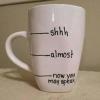Weight Map tool... is this a bug?
 mtl1
Posts: 1,507
mtl1
Posts: 1,507
I'm having severe issues with the weight map tool.
When I attempt to use the Weight Map tool on a General Weighted, autofitted object, removing or filling 0 weights on one surface oftentimes sends additional weights to other surfaces -- to the point where the vertex bugs out and locks at 1. This also happens with the attenuation tool.
The only way to remove that bugged value is to use the smooth tool, which sends even more weights to other maps.
What's more is that if the vertices aren't connected to anything, a bugged weight of 1 becomes impossible to remove because the smoothing tool needs adjacent non-bugged vertices to work.
Is this a known bug with the tool, or is the intended action -- that is, smothing is for the surface and not the weight?


Comments
The tool is working actually - you are just giving it a very odd command.
Weights on each map should be equal to 1 when all maps are added up. When you smooth them out, adjacent nodes receive "parts" of them. Normally a new figure has its "root" bone have 100% of weights scaled to 1. So one node controls everything. As you fill up other maps, they subtract from the "root" and are placed in the desired Nodes.
Technically - painting(smoothing) a map tells this to the program: "Take the influence map from the root bone(current selection) and place X amount of it on THIS NODE."
Now, when you delete a map - you give it the following command: "Take the influence map from this node and place it -no target specified-." You tell the tool to put it "wherever". So it chooses adjacent maps or the root bone.
If you wish to place the weights into a specific place, I suggest using "Distribute Selected Bone Weights" instead from Weight Editing.
1. Select an area of the geometry that you wish to move to another bone.
2. Select the node that you wish to receive the weight.
3. Hold Ctrl and add the node you wish to subtract from.
4. Use "Distribute Selected Bone Weights".
It should function.
This makes more sense then. I can use your steps to set up weight maps for each side of a figure's face too :)
More on topic: If I'm reading your explanation correctly, the nuance is that the vertex isn't actually one, but could possibly have an extremely large value normalized to one? And that all weights *must* add up to one?
Also, why doesn't the Fill function removed these 1-weighted values? I usually get these values after a fairly bad auto-fit result...
Are you using 1.00 Sensitivity for the brush? Unless you use 1.00 it will usually not fully draw on a surface. You might also select a surface and use "Fill Selected" in Weight editing to 100% cover an area.
As for the vertex, it has fractions among the maps - that when all are added up will result in 1. When smoothing it usually shares its map with its parent or Child bone, depending on which map it "smooths to". I usually suggest first creating all the maps you will use, then Fill them up so everything is at 1 and contains a map. Afterwards smooth maps to achieve desired result.
And auto-fitting or Transfer Utility usually has problems. The calculations it is performing aren't perfect - but they do the majority of work for you. Unless the item was hand-corrected it will always have issues.
Yeah, then I think what I'm getting isn't necessarily a bug with the weight map tool, but the consequence of using auto-fit/TU and getting strange values. Hand-correcting doesn't seem to fix the issues, but that could be due to my inexperience with this tool.
Also, Fill Selected doesn't remove seem to these bugged vertices so maybe I'll submit a bug report a little later today.
Maybe the vertices in question are a problem in the OBJ...like they aren't welded/properly assigned.
Like if you are working on a skirt hem and there is a vertex assigned to the waistband...no matter what you do with the hem will actually affect that one.
Well, if I use a set of heels as an example, some of the weights end up on the flat of of the shoe. However, as I edit the weight maps, they migrate over to the buckle and strap, which doesn't seem to be welded properly to the rest of the shoe.
Granted, this was an older V4 item too, which wasn't meant for General Weight Mapping.
Yeah...that's probably one of the problems. Some of that stuff wasn't really good in how vertices were assigned to groups/regions/surfaces.
You can export the shoes as an OBJ file to a modelling app. In the modeller you can use something to weld near vertices (Hexagon for example has Average Weld). Afterwards you can import it back to DAZ and rig it fresh to match the new figure.